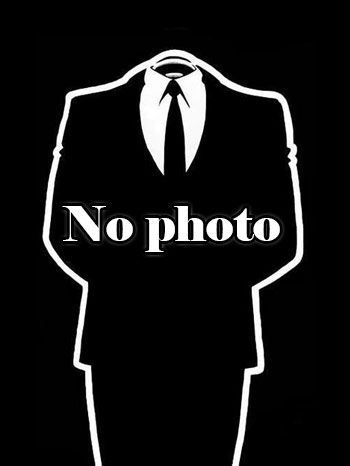Sam Katzman is a Director, Writer, Producer, Second Unit Director and Presenter American born on 7 july 1901 at New York City (USA)
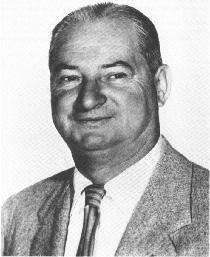
Sam Katzman (July 7, 1901 – August 4, 1973) was an American film producer and director. Katzman went to work as a stage laborer at the age of 13 in the fledgling East Coast film industry. He would learn all aspects of filmmaking and become a highly successful Hollywood producer for more than 40 years.
Katzman produced cost-effective films that made money for the studios and his financial backers. He is noted for numerous westerns of the '30s, his Bela Lugosi and East Side Kids features of the '40s, the 15-chapter Superman serial of 1948 and a string of rock-'n'-roll musicals in the '50s. At Metro-Goldwyn-Mayer in the '60s Katzman produced several Elvis Presley films and singer Roy Orbison's only film, The Fastest Guitar Alive.
He is the uncle of television producer Leonard Katzman. Sam Katzman died on August 4, 1973, in Hollywood. He is interred in the Hillside Memorial Park Cemetery in Culver City, California.
Do not restore or edit the blanked content on this page until the issue is resolved by an administrator, copyright clerk or OTRS agent.
If you have just labeled this page as a potential copyright issue, please follow the instructions for filing at the bottom of the box.
100px
The previous content of this page or section has been identified as posing a potential copyright issue, as a copy or modification of the text from the source(s) below, and is now listed on Wikipedia:Copyright problems (listing):
Lost in the Fifties: Recovering Phantom Hollywood by W. W. Dixon
Unless the copyright status of the text on this page is clarified, the problematic text or the entire page may be deleted one week after the time of its listing.
Temporarily, the original posting is still accessible for viewing in the page history.
Can you help resolve this issue?
If you hold the copyright to this text, you can license it in a manner that allows its use on Wikipedia. Click "Show" to see how.
You must permit the use of your material under the terms of the Creative Commons Attribution-Sharealike 3.0 Unported License (CC-BY-SA) and the GNU Free Documentation License (GFDL) (unversioned, with no invariant sections, front-cover texts, or back-cover texts).
Explain your intent to license the content on this article's discussion page
To confirm your permission, you can either display a notice to this effect at the site of original publication or send an e-mail from an address associated with the original publication to permissions-en at wikimedia dot org or a postal letter to the Wikimedia Foundation. These messages must explicitly permit use under CC-BY-SA and the GFDL. See Wikipedia:Donating copyrighted materials.
Note that articles on Wikipedia must be written from a neutral point of view and must be verifiable in published third-party sources; consider whether, copyright issues aside, your text is appropriate for inclusion in Wikipedia.
To demonstrate that this text is in the public domain, or is already under a license suitable for Wikipedia, click "Show".
Explain this on this article's discussion page, with reference to evidence. Wikipedia:Public domain and Wikipedia:Compatibly licensed may assist in determining the status.
Otherwise, you may write a new article without copyright-infringing material. Click "Show" to read where and how.
Your rewrite should be placed on this page, where it will be available for an administrator or clerk to review it at the end of the listing period. Follow this link to create the temporary subpage.
Simply modifying copyrighted text is not sufficient to avoid copyright infringement—if the original copyright violation cannot be cleanly removed or the article reverted to a prior version, it is best to write the article from scratch. (See Wikipedia:Close paraphrasing.)
For license compliance, any content used from the original article must be properly attributed; if you use content from the original, please leave a note at the top of your rewrite saying as much. You may duplicate non-infringing text that you had contributed yourself.
It is always a good idea, if rewriting, to identify the point where the copyrighted content was imported to Wikipedia and to check to make sure that the contributor did not add content imported from other sources. When closing investigations, clerks and administrators may find other copyright problems than the one identified. If this material is in the proposed rewrite and cannot be easily removed, the rewrite may not be usable.
State that you have created a rewrite on this article's discussion page.
About importing text to Wikipedia
Posting copyrighted material without the express permission of the copyright holder is unlawful and against Wikipedia policy.
If you have express permission, this must be verified either by explicit release at the source or by e-mail or letter to the Wikimedia Foundation. See Wikipedia:Declaration of consent for all enquiries.
Policy requires that we block those who repeatedly post copyrighted material without express permission.
Instructions for filing
If you have tagged the article for investigation, please complete the following steps:
Add the following to the bottom of Wikipedia:Copyright_problems/2013 octobre 7
* {{subst:article-cv|:CLIParser}} from Lost in the Fifties: Recovering Phantom Hollywood by W. W. Dixon. ~~~~
Place this notice on the talk page of the contributor of the copyrighted material:
{{subst:Nothanks-web|pg=CLIParser|url=Lost in the Fifties: Recovering Phantom Hollywood by W. W. Dixon}} ~~~~
To blank a section instead of an entire article, add the template to the beginning of the section and at the end of the portion you intend to blank.
Early life and career
Born in New York City to Abraham and Rebecca Katzman, a poor Jewish family, Katzman entered the film industry shortly before World War I as an errand boy at Fox Film Corporation, which was then making low-budget short films at its studios in Fort Lee, NJ. As a mail carrier, prop boy and laboratory messenger, carrying cans of exposed film back and forth to the lab, Katzman quickly learned all the angles of the low-budget film business, and gradually rose to the rank of assistant director.
Fox let Katzman go in the early '30s in a wave of cutbacks just before the company merged with 20th Century Pictures. He thus became an independent producer and created his first venture, a feature-length film called His Private Secretary (1933), which he wrote himself. John Wayne was featured, and Katzman made it in six days at an overall cost of $13,000. It was a financial, if not critical, success, and from this modest beginning, Katzman never looked back.
Low-budget producers usually made outdoor westerns and action pictures, saving money on sets and using inexpensive actors. Katzman was no exception, and he filled his films with former silent-screen players who still had name value but commanded lower salaries. His companies of the late '30s, Victory Pictures (1935–1939) and Puritan Pictures (1935–1938), relied on screen menace Bela Lugosi, cowboy star Tim McCoy and Olympic athlete Herman Brix (later to change his name to Bruce Bennett) to draw the customers.
Monogram Pictures
Monogram Pictures, a small but prolific independent studio, specialized in low-budget films for neighborhood theaters. Monogram produced most of its own films in-house, but also released films made by independent producers. Katzman sold Monogram on a juvenile delinquency series, to cash in on the successful cycle of the Dead End Kids and Little Tough Guys melodramas. Katzman's series, The East Side Kids, caught on almost immediately, and before long many of the original Dead End Kids and Little Tough Guys joined Katzman's series. The East Side Kids films gradually evolved from noisy melodramas to roughneck comedies. Leo Gorcey, Huntz Hall, Bobby Jordan, Gabriel Dell, Billy Benedict and 'Sunshine' Sammy Morrison were mainstays of Katzman's East Side troupe.
Katzman branched out with companion series for Monogram. He partnered with Jack Dietz to produce Bela Lugosi thrillers and comedy features with Harry Langdon, Billy Gilbert and Shemp Howard. When Leo Gorcey demanded double his weekly salary from Katzman in 1945, Katzman refused and pulled the plug on The East Side Kids series. He then approached Monogram with an idea at the opposite extreme: the wholesome adventures of squeaky-clean high school kids. Monogram agreed, and Katzman launched the "Teen Agers" series, featuring singer Freddie Stewart and future "Superman" co-star Noel Neill. The first of these was 1946's Junior Prom.
Move to Columbia
In 1945 Katzman accepted a contract from Columbia Pictures to produce adventure serials and, soon after, feature films. For two years he worked for both Monogram and Columbia, grinding out serials and low-budget features at a truly torrential pace. In 1947 he joined Columbia full-time, with a series of four Jean Porter musical comedies and another two Gloria Jean vehicles. Columbia's arrangement with Katzman was straightforward: Katzman selected the properties, Columbia approved the scripts and financed the productions, Katzman made the films using studio personnel and resources, and Columbia gave Katzman 25% of the profits. The Katzman unit occupied the former Tiffany Pictures studio, now Columbia property.
One of Katzman's specialties at Columbia was taking a major news story, popular trend or musical craze and making a film about it. He worked so quickly that the film would be in theaters while the topic was still hot, ensuring big profits. One of his first pictures of this type was 1948's I Surrender Dear, cashing in on the new disc-jockey phenomenon in broadcasting. He used elements from this picture as a blueprint for his rock-and-roll musical hits, Rock Around the Clock (1956) and Don't Knock the Rock (1957) that he remade in 1961 as Twist Around the Clock and Don't Knock the Twist. He also made films on two other musical crazes, Cha Cha Cha Boom! (with Perez Prado) and Calypso Heat Wave. Katzman produced one of the first films about the Korean War, A Yank in Korea with Lon McCallister, that competed with Lippert's The Steel Helmet and Eagle-Lion's Korea Patrol.
Katzman revitalized the waning serial market with his 1948 production Superman, starring Kirk Alyn as the Man of Steel and former "Teen Agers" actress Noel Neill as Lois Lane. The 15-chapter cliffhanger was tremendously successful, spawning two more superhero serials, Batman and Robin (1949) and Atom Man vs. Superman (1950). Katzman continued to produce serials until 1956; his Blazing the Overland Trail (a very low-budget patchwork of old stock footage and new scenes, with the actors costumed to match three serial heroes of the '40s!) rang down the curtain on the serial genre (Columbia would reissue Katzman's serials through 1966).
In 1949 Katzman hired Olympic hero and movie Tarzan Johnny Weissmuller (who had been replaced by Lex Barker in the RKO Tarzan films) for a series of Jungle Jim adventures, earning Katzman the nickname "Jungle Sam." By 1955 Columbia turned Jungle Jim into a television property, and when legalities prevented Columbia from making any more Jungle Jims for theaters, Katzman simply shrugged off the Jungle Jim character and had Weissmuller use his own name in three more features. The last one, Jungle Moon Men (Charles S. Gould, 1955), was yet another remake of Sir H. Rider Haggard’s classic novel She (after Katzman stopped making the features, Weissmuller starred in 39 "Jungle Jim" TV episodes).
On the set Katzman would use his collection of canes as a personal prop, banging them against the floor or the scenery when production fell behind schedule. The pace of Katzman’s film production from 1950-'59 is blistering, touching nearly all the generic bases in the process. Starting in 1950 with director William Berke’s Mark of the Gorilla, Katzman proved himself a master of all genres, with such films as Lew Landers’ Tyrant of the Sea (1950), a rapidly paced swashbuckler; Spencer Gordon Bennet’s Cody of the Pony Express (1950), an elegiac western chapter-play; the near-documentary State Penitentiary (Lew Landers, 1950); the rousing action serial Pirates of the High Seas (Spencer Gordon Bennet, 1950); Chain Gang (Lew Landers, 1950), a hard-boiled exposé of the prison system reminiscent of Mervyn LeRoy’s 1932 classic I Am a Fugitive from a Chain Gang; A Yank in Korea (Landers, 1951), covering the then-escalating conflict), Richard Quine’s wartime drama Purple Heart Diary (1951); Last Train from Bombay (Fred F. Sears, 1952), an exotic thriller; Sears' The 49th Man, an essay in Cold War atomic paranoia; two Arabian Nights films, Prisoners of the Casbah and The Saracen Blade (William Castle, 1954) and Castle’s The Iron Glove (1954), which starred Robert Stack in a Technicolor swashbuckler, done in typical Katzman fashion. In many respects Katzman’s films proved an apt training ground for young directors; if you could work for Katzman and make something worthwhile, you could work for the majors, with their relaxed schedules, without a problem.
Columbia sometimes used the Katzman unit as a threat. When Columbia president Harry Cohn wanted to break an actor's contract, he gave the actor a Katzman script. Everyone knew Katzman as a "schlock" producer, and Cohn knew full well that the actor would refuse the lowbrow script, giving Cohn cause to terminate the contract without penalty. This ploy backfired in 1951 when Cohn owed Lucille Ball $85,000 and one feature film. He sent Ball the script of a formula Arabian Nights fantasy, The Magic Carpet, confident that Ball would decline. Ball recounted her next move in her memoir, Love, Lucy: "I had never feuded with a studio before and I wasn't about to earn the reputation of being difficult at this late date. I picked up the phone and called Harry Cohn. "I've just read the Sam Katzman script", I crooned into his ear. "I think it's marvelous! I'd be delighted to do it". "You would?"' Mr. Cohn almost fell over backward and poor Sam Katzman just about had a coronary . . . My salary ate up half Katzman's budget." Undaunted, Katzman and Columbia house director Lew Landers made the film in color, using costumes and sets left over from other, more lavish productions.
Katzman's directors
Katzman’s directors were either on their way up, or trailing off at the end of their careers. Veterans Arthur Dreifuss, Lew Landers and William Berke were good, workmanlike directors and old hands at directing "B" comedies, musicals and mysteries. Serial specialist Spencer Gordon Bennet, whose career went back to the silent-film days, speedily churned out action fare for Katzman. Richard Quine, on the other hand, would go on to "A" features, most memorably with The Solid Gold Cadillac (1956), which starred Judy Holliday and Paul Douglas and established Quine’s career as a major Columbia director. Future horror director William Castle was still developing his own style, and Katzman allowed him to cut his directorial teeth on a series of low-budget films. Fred F. Sears was a former actor in Columbia "B" pictures who assisted behind the scenes on Katzman's serials, and was promoted to full-fledged director.
Working for Katzman could be very tough indeed, however. On The Houston Story (1956) Castle was shooting on location in Texas in August 1955 when star Lee J. Cobb was felled with a non-fatal heart attack after three days of shooting. Katzman insisted that production continue, so Castle, who resembled Cobb’s general physical build, took over Cobb’s role, performing much of the action in long shot with his back to the camera. This took another three days, and then the company returned to Hollywood. Castle hoped to finish up Cobb’s scenes after the actor recuperated, but Katzman instead cast Gene Barry in Cobb’s role, shot a few more days of film and then released the production with Barry as the star. In the final film Cobb, Castle and Barry all played the leading role of “Frank Duncan” at various points; Katzman simply gave the material to his trusted editor, Edwin H. Bryant, and told him to patch it together.
New Orleans Uncensored (Castle, 1955) was a true-crime drama, exposing the seamy underside of the Big Easy; It Came from Beneath the Sea (Robert Gordon, 1955) served primarily as a showcase for Ray Harryhausen’s stop motion special effects; Fred F. Sears’ Teen-Age Crime Wave (1955) was a surprisingly stark nod to the country’s new awareness of the problem of juvenile delinquency. Rock Around the Clock (Sears, 1956) was one of the first rock-'n'-roll movies to be released by a major studio, based upon Katzman’s intuition that rock music would soon be a major force in American culture; and Miami Exposé (Sears, 1956) starred Lee J. Cobb in a neo-realist tale of big-city corruption, with spirited support from Alan Napier and Edward Arnold.
Hollywood blacklist
Katzman also made it a practice to employ screenwriters who had been blacklisted due to the activities of the House Un-American Activities Committee during the Cold War Red Scare era. Many producers followed this practice, but Katzman, with his insatiable need for screenplays, was more deeply involved in using "blacklisted" talent than most. Blacklisted scenarist Bernard Gordon, for example, wrote Castle’s The Law vs. Billy The Kid (1954) as "John D. Williams". as well as Earth vs. the Flying Saucers (Fred F. Sears, 1956), Edward L. Cahn’s Zombies of Mora Tau (1957), Leslie Kardos’ The Man Who Turned to Stone (1957) and Sears' Escape from San Quentin (1957) as "Raymond T. Marcus", all of which were produced by Katzman. For Katzman the important thing was that a person worked reliably, efficiently and inexpensively; if a writer fit these criteria, Katzman was interested.
In all his films Katzman created a sealed, hermetic universe, within which his characters could operate with impunity. There were no rules to break, because Katzman had created the rules, and with them the concept of the genre "hot-wire" (in which several genres are combined to create a new twist on an existing format, such as the comedy/western, the horror/musical and the like). Using this concept to bring new life to existing--and often overused--genres, Katzman created a cinematic vision that was his and his alone.
Final years
As the '60s progressed, Katzman would make several films at MGM with Elvis Presley, including Gene Nelson's Harum Scarum (1965), with a budget of $2,400,000 and an 18-day schedule. Presley received $1,000,000, while the rest of the cast split a paltry $200,000; the rest of the budget went entirely to production costs. However, the Elvis films did not reflect Katzman’s true approach to filmmaking. Whereas Columbia's Twist Around the Clock, made just three years earlier, had cost a mere $280,000, now Katzman was forced to deal with a budget that was nearly 10 times that amount. The fun, and the maverick vision that had brought Katzman to Hollywood, had vanished.
Katzman’s final films were marginal, and the assembly-line production system that had served him so well now seemed out of step with the times. For the first time, Katzman was unable to adapt to changing circumstances.
Sam Katzman died on August 4, 1973, in Hollywood. He is interred in the Hillside Memorial Park Cemetery in Culver City, California.
Source : Wikidata
Sam Katzman

- Infos
- Photos
- Best films
- Family
- Characters
- Awards
Nationality USA
Birth 7 july 1901 at New York City (USA)
Death 4 august 1973 (at 72 years) at Hollywood (USA)
Birth 7 july 1901 at New York City (USA)
Death 4 august 1973 (at 72 years) at Hollywood (USA)
Katzman produced cost-effective films that made money for the studios and his financial backers. He is noted for numerous westerns of the '30s, his Bela Lugosi and East Side Kids features of the '40s, the 15-chapter Superman serial of 1948 and a string of rock-'n'-roll musicals in the '50s. At Metro-Goldwyn-Mayer in the '60s Katzman produced several Elvis Presley films and singer Roy Orbison's only film, The Fastest Guitar Alive.
He is the uncle of television producer Leonard Katzman. Sam Katzman died on August 4, 1973, in Hollywood. He is interred in the Hillside Memorial Park Cemetery in Culver City, California.
Biography
Investigation of potential copyright issueDo not restore or edit the blanked content on this page until the issue is resolved by an administrator, copyright clerk or OTRS agent.
If you have just labeled this page as a potential copyright issue, please follow the instructions for filing at the bottom of the box.
100px
The previous content of this page or section has been identified as posing a potential copyright issue, as a copy or modification of the text from the source(s) below, and is now listed on Wikipedia:Copyright problems (listing):
Lost in the Fifties: Recovering Phantom Hollywood by W. W. Dixon
Unless the copyright status of the text on this page is clarified, the problematic text or the entire page may be deleted one week after the time of its listing.
Temporarily, the original posting is still accessible for viewing in the page history.
Can you help resolve this issue?
If you hold the copyright to this text, you can license it in a manner that allows its use on Wikipedia. Click "Show" to see how.
You must permit the use of your material under the terms of the Creative Commons Attribution-Sharealike 3.0 Unported License (CC-BY-SA) and the GNU Free Documentation License (GFDL) (unversioned, with no invariant sections, front-cover texts, or back-cover texts).
Explain your intent to license the content on this article's discussion page
To confirm your permission, you can either display a notice to this effect at the site of original publication or send an e-mail from an address associated with the original publication to permissions-en at wikimedia dot org or a postal letter to the Wikimedia Foundation. These messages must explicitly permit use under CC-BY-SA and the GFDL. See Wikipedia:Donating copyrighted materials.
Note that articles on Wikipedia must be written from a neutral point of view and must be verifiable in published third-party sources; consider whether, copyright issues aside, your text is appropriate for inclusion in Wikipedia.
To demonstrate that this text is in the public domain, or is already under a license suitable for Wikipedia, click "Show".
Explain this on this article's discussion page, with reference to evidence. Wikipedia:Public domain and Wikipedia:Compatibly licensed may assist in determining the status.
Otherwise, you may write a new article without copyright-infringing material. Click "Show" to read where and how.
Your rewrite should be placed on this page, where it will be available for an administrator or clerk to review it at the end of the listing period. Follow this link to create the temporary subpage.
Simply modifying copyrighted text is not sufficient to avoid copyright infringement—if the original copyright violation cannot be cleanly removed or the article reverted to a prior version, it is best to write the article from scratch. (See Wikipedia:Close paraphrasing.)
For license compliance, any content used from the original article must be properly attributed; if you use content from the original, please leave a note at the top of your rewrite saying as much. You may duplicate non-infringing text that you had contributed yourself.
It is always a good idea, if rewriting, to identify the point where the copyrighted content was imported to Wikipedia and to check to make sure that the contributor did not add content imported from other sources. When closing investigations, clerks and administrators may find other copyright problems than the one identified. If this material is in the proposed rewrite and cannot be easily removed, the rewrite may not be usable.
State that you have created a rewrite on this article's discussion page.
About importing text to Wikipedia
Posting copyrighted material without the express permission of the copyright holder is unlawful and against Wikipedia policy.
If you have express permission, this must be verified either by explicit release at the source or by e-mail or letter to the Wikimedia Foundation. See Wikipedia:Declaration of consent for all enquiries.
Policy requires that we block those who repeatedly post copyrighted material without express permission.
Instructions for filing
If you have tagged the article for investigation, please complete the following steps:
Add the following to the bottom of Wikipedia:Copyright_problems/2013 octobre 7
* {{subst:article-cv|:CLIParser}} from Lost in the Fifties: Recovering Phantom Hollywood by W. W. Dixon. ~~~~
Place this notice on the talk page of the contributor of the copyrighted material:
{{subst:Nothanks-web|pg=CLIParser|url=Lost in the Fifties: Recovering Phantom Hollywood by W. W. Dixon}} ~~~~
To blank a section instead of an entire article, add the template to the beginning of the section and at the end of the portion you intend to blank.
Early life and career
Born in New York City to Abraham and Rebecca Katzman, a poor Jewish family, Katzman entered the film industry shortly before World War I as an errand boy at Fox Film Corporation, which was then making low-budget short films at its studios in Fort Lee, NJ. As a mail carrier, prop boy and laboratory messenger, carrying cans of exposed film back and forth to the lab, Katzman quickly learned all the angles of the low-budget film business, and gradually rose to the rank of assistant director.
Fox let Katzman go in the early '30s in a wave of cutbacks just before the company merged with 20th Century Pictures. He thus became an independent producer and created his first venture, a feature-length film called His Private Secretary (1933), which he wrote himself. John Wayne was featured, and Katzman made it in six days at an overall cost of $13,000. It was a financial, if not critical, success, and from this modest beginning, Katzman never looked back.
Low-budget producers usually made outdoor westerns and action pictures, saving money on sets and using inexpensive actors. Katzman was no exception, and he filled his films with former silent-screen players who still had name value but commanded lower salaries. His companies of the late '30s, Victory Pictures (1935–1939) and Puritan Pictures (1935–1938), relied on screen menace Bela Lugosi, cowboy star Tim McCoy and Olympic athlete Herman Brix (later to change his name to Bruce Bennett) to draw the customers.
Monogram Pictures
Monogram Pictures, a small but prolific independent studio, specialized in low-budget films for neighborhood theaters. Monogram produced most of its own films in-house, but also released films made by independent producers. Katzman sold Monogram on a juvenile delinquency series, to cash in on the successful cycle of the Dead End Kids and Little Tough Guys melodramas. Katzman's series, The East Side Kids, caught on almost immediately, and before long many of the original Dead End Kids and Little Tough Guys joined Katzman's series. The East Side Kids films gradually evolved from noisy melodramas to roughneck comedies. Leo Gorcey, Huntz Hall, Bobby Jordan, Gabriel Dell, Billy Benedict and 'Sunshine' Sammy Morrison were mainstays of Katzman's East Side troupe.
Katzman branched out with companion series for Monogram. He partnered with Jack Dietz to produce Bela Lugosi thrillers and comedy features with Harry Langdon, Billy Gilbert and Shemp Howard. When Leo Gorcey demanded double his weekly salary from Katzman in 1945, Katzman refused and pulled the plug on The East Side Kids series. He then approached Monogram with an idea at the opposite extreme: the wholesome adventures of squeaky-clean high school kids. Monogram agreed, and Katzman launched the "Teen Agers" series, featuring singer Freddie Stewart and future "Superman" co-star Noel Neill. The first of these was 1946's Junior Prom.
Move to Columbia
In 1945 Katzman accepted a contract from Columbia Pictures to produce adventure serials and, soon after, feature films. For two years he worked for both Monogram and Columbia, grinding out serials and low-budget features at a truly torrential pace. In 1947 he joined Columbia full-time, with a series of four Jean Porter musical comedies and another two Gloria Jean vehicles. Columbia's arrangement with Katzman was straightforward: Katzman selected the properties, Columbia approved the scripts and financed the productions, Katzman made the films using studio personnel and resources, and Columbia gave Katzman 25% of the profits. The Katzman unit occupied the former Tiffany Pictures studio, now Columbia property.
One of Katzman's specialties at Columbia was taking a major news story, popular trend or musical craze and making a film about it. He worked so quickly that the film would be in theaters while the topic was still hot, ensuring big profits. One of his first pictures of this type was 1948's I Surrender Dear, cashing in on the new disc-jockey phenomenon in broadcasting. He used elements from this picture as a blueprint for his rock-and-roll musical hits, Rock Around the Clock (1956) and Don't Knock the Rock (1957) that he remade in 1961 as Twist Around the Clock and Don't Knock the Twist. He also made films on two other musical crazes, Cha Cha Cha Boom! (with Perez Prado) and Calypso Heat Wave. Katzman produced one of the first films about the Korean War, A Yank in Korea with Lon McCallister, that competed with Lippert's The Steel Helmet and Eagle-Lion's Korea Patrol.
Katzman revitalized the waning serial market with his 1948 production Superman, starring Kirk Alyn as the Man of Steel and former "Teen Agers" actress Noel Neill as Lois Lane. The 15-chapter cliffhanger was tremendously successful, spawning two more superhero serials, Batman and Robin (1949) and Atom Man vs. Superman (1950). Katzman continued to produce serials until 1956; his Blazing the Overland Trail (a very low-budget patchwork of old stock footage and new scenes, with the actors costumed to match three serial heroes of the '40s!) rang down the curtain on the serial genre (Columbia would reissue Katzman's serials through 1966).
In 1949 Katzman hired Olympic hero and movie Tarzan Johnny Weissmuller (who had been replaced by Lex Barker in the RKO Tarzan films) for a series of Jungle Jim adventures, earning Katzman the nickname "Jungle Sam." By 1955 Columbia turned Jungle Jim into a television property, and when legalities prevented Columbia from making any more Jungle Jims for theaters, Katzman simply shrugged off the Jungle Jim character and had Weissmuller use his own name in three more features. The last one, Jungle Moon Men (Charles S. Gould, 1955), was yet another remake of Sir H. Rider Haggard’s classic novel She (after Katzman stopped making the features, Weissmuller starred in 39 "Jungle Jim" TV episodes).
On the set Katzman would use his collection of canes as a personal prop, banging them against the floor or the scenery when production fell behind schedule. The pace of Katzman’s film production from 1950-'59 is blistering, touching nearly all the generic bases in the process. Starting in 1950 with director William Berke’s Mark of the Gorilla, Katzman proved himself a master of all genres, with such films as Lew Landers’ Tyrant of the Sea (1950), a rapidly paced swashbuckler; Spencer Gordon Bennet’s Cody of the Pony Express (1950), an elegiac western chapter-play; the near-documentary State Penitentiary (Lew Landers, 1950); the rousing action serial Pirates of the High Seas (Spencer Gordon Bennet, 1950); Chain Gang (Lew Landers, 1950), a hard-boiled exposé of the prison system reminiscent of Mervyn LeRoy’s 1932 classic I Am a Fugitive from a Chain Gang; A Yank in Korea (Landers, 1951), covering the then-escalating conflict), Richard Quine’s wartime drama Purple Heart Diary (1951); Last Train from Bombay (Fred F. Sears, 1952), an exotic thriller; Sears' The 49th Man, an essay in Cold War atomic paranoia; two Arabian Nights films, Prisoners of the Casbah and The Saracen Blade (William Castle, 1954) and Castle’s The Iron Glove (1954), which starred Robert Stack in a Technicolor swashbuckler, done in typical Katzman fashion. In many respects Katzman’s films proved an apt training ground for young directors; if you could work for Katzman and make something worthwhile, you could work for the majors, with their relaxed schedules, without a problem.
Columbia sometimes used the Katzman unit as a threat. When Columbia president Harry Cohn wanted to break an actor's contract, he gave the actor a Katzman script. Everyone knew Katzman as a "schlock" producer, and Cohn knew full well that the actor would refuse the lowbrow script, giving Cohn cause to terminate the contract without penalty. This ploy backfired in 1951 when Cohn owed Lucille Ball $85,000 and one feature film. He sent Ball the script of a formula Arabian Nights fantasy, The Magic Carpet, confident that Ball would decline. Ball recounted her next move in her memoir, Love, Lucy: "I had never feuded with a studio before and I wasn't about to earn the reputation of being difficult at this late date. I picked up the phone and called Harry Cohn. "I've just read the Sam Katzman script", I crooned into his ear. "I think it's marvelous! I'd be delighted to do it". "You would?"' Mr. Cohn almost fell over backward and poor Sam Katzman just about had a coronary . . . My salary ate up half Katzman's budget." Undaunted, Katzman and Columbia house director Lew Landers made the film in color, using costumes and sets left over from other, more lavish productions.
Katzman's directors
Katzman’s directors were either on their way up, or trailing off at the end of their careers. Veterans Arthur Dreifuss, Lew Landers and William Berke were good, workmanlike directors and old hands at directing "B" comedies, musicals and mysteries. Serial specialist Spencer Gordon Bennet, whose career went back to the silent-film days, speedily churned out action fare for Katzman. Richard Quine, on the other hand, would go on to "A" features, most memorably with The Solid Gold Cadillac (1956), which starred Judy Holliday and Paul Douglas and established Quine’s career as a major Columbia director. Future horror director William Castle was still developing his own style, and Katzman allowed him to cut his directorial teeth on a series of low-budget films. Fred F. Sears was a former actor in Columbia "B" pictures who assisted behind the scenes on Katzman's serials, and was promoted to full-fledged director.
Working for Katzman could be very tough indeed, however. On The Houston Story (1956) Castle was shooting on location in Texas in August 1955 when star Lee J. Cobb was felled with a non-fatal heart attack after three days of shooting. Katzman insisted that production continue, so Castle, who resembled Cobb’s general physical build, took over Cobb’s role, performing much of the action in long shot with his back to the camera. This took another three days, and then the company returned to Hollywood. Castle hoped to finish up Cobb’s scenes after the actor recuperated, but Katzman instead cast Gene Barry in Cobb’s role, shot a few more days of film and then released the production with Barry as the star. In the final film Cobb, Castle and Barry all played the leading role of “Frank Duncan” at various points; Katzman simply gave the material to his trusted editor, Edwin H. Bryant, and told him to patch it together.
New Orleans Uncensored (Castle, 1955) was a true-crime drama, exposing the seamy underside of the Big Easy; It Came from Beneath the Sea (Robert Gordon, 1955) served primarily as a showcase for Ray Harryhausen’s stop motion special effects; Fred F. Sears’ Teen-Age Crime Wave (1955) was a surprisingly stark nod to the country’s new awareness of the problem of juvenile delinquency. Rock Around the Clock (Sears, 1956) was one of the first rock-'n'-roll movies to be released by a major studio, based upon Katzman’s intuition that rock music would soon be a major force in American culture; and Miami Exposé (Sears, 1956) starred Lee J. Cobb in a neo-realist tale of big-city corruption, with spirited support from Alan Napier and Edward Arnold.
Hollywood blacklist
Katzman also made it a practice to employ screenwriters who had been blacklisted due to the activities of the House Un-American Activities Committee during the Cold War Red Scare era. Many producers followed this practice, but Katzman, with his insatiable need for screenplays, was more deeply involved in using "blacklisted" talent than most. Blacklisted scenarist Bernard Gordon, for example, wrote Castle’s The Law vs. Billy The Kid (1954) as "John D. Williams". as well as Earth vs. the Flying Saucers (Fred F. Sears, 1956), Edward L. Cahn’s Zombies of Mora Tau (1957), Leslie Kardos’ The Man Who Turned to Stone (1957) and Sears' Escape from San Quentin (1957) as "Raymond T. Marcus", all of which were produced by Katzman. For Katzman the important thing was that a person worked reliably, efficiently and inexpensively; if a writer fit these criteria, Katzman was interested.
In all his films Katzman created a sealed, hermetic universe, within which his characters could operate with impunity. There were no rules to break, because Katzman had created the rules, and with them the concept of the genre "hot-wire" (in which several genres are combined to create a new twist on an existing format, such as the comedy/western, the horror/musical and the like). Using this concept to bring new life to existing--and often overused--genres, Katzman created a cinematic vision that was his and his alone.
Final years
As the '60s progressed, Katzman would make several films at MGM with Elvis Presley, including Gene Nelson's Harum Scarum (1965), with a budget of $2,400,000 and an 18-day schedule. Presley received $1,000,000, while the rest of the cast split a paltry $200,000; the rest of the budget went entirely to production costs. However, the Elvis films did not reflect Katzman’s true approach to filmmaking. Whereas Columbia's Twist Around the Clock, made just three years earlier, had cost a mere $280,000, now Katzman was forced to deal with a budget that was nearly 10 times that amount. The fun, and the maverick vision that had brought Katzman to Hollywood, had vanished.
Katzman’s final films were marginal, and the assembly-line production system that had served him so well now seemed out of step with the times. For the first time, Katzman was unable to adapt to changing circumstances.
Sam Katzman died on August 4, 1973, in Hollywood. He is interred in the Hillside Memorial Park Cemetery in Culver City, California.
Usually with
Filmography of Sam Katzman (166 films)
Director

Amateur Crook (1937)
Directed by Sam Katzman
Origin USA
Genres Thriller, Comedy, Romantic comedy, Action, Crime, Romance
Actors Bruce Bennett, Joan Barclay, Monte Blue, Jack Mulhall, Vivien Oakland, Jimmy Aubrey
Rating51%






Brothers of the West (1937)
, 58minutesDirected by Sam Katzman
Origin USA
Genres Western
Actors Tom Tyler, Lois Wilde, Dorothy Short, Lafe McKee, Dave O'Brien, Jim Corey
Rating60%





Tyler est un détective de distance dont le frère est accusé d'avoir volé une banque et assassiné le président de la banque. Pour le prouver innocent, Tyler doit déchiffrer son seul indice, un ensemble inhabituel de traces de pneus.

Lost Ranch (1937)
, 56minutesDirected by Sam Katzman
Origin USA
Genres Western
Actors Tom Tyler, Slim Whitaker, Theodore Lorch, Forrest Taylor, Marjorie Beebe, Lafe McKee
Rating55%





This script must be run from the command line
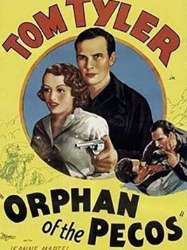
Orphan of the Pecos (1937)
, 55minutesDirected by Sam Katzman
Origin USA
Genres Western
Actors Tom Tyler, Forrest Taylor, Slim Whitaker, Theodore Lorch, Lafe McKee, Marjorie Beebe
Rating62%





Rancher Hank Gelbert (Lafe McKee) receives a visit from his foreman, Jess Brand (Forrest Taylor), who wants to see Gelbert's daughter Ann. Knowing that Brand is only interested in Ann to get money to pay off his gambling debts, Gelbert tells him to clear off his property. As Gelbert opens his safe to pay Brand his last wages, Brand shoots him and takes off with the money. On the road he encounters Ann (Jeanne Martel) and tries to persuade her that he loves her, but she does not trust him, knowing he only wants to marry her as a way of getting the ranch.
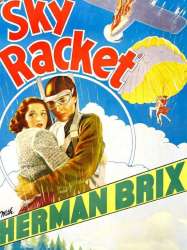
Sky Racket (1937)
, 1h3Directed by Sam Katzman
Origin USA
Genres Science fiction, Action
Actors Bruce Bennett, Joan Barclay, Monte Blue, Duncan Renaldo, Hattie McDaniel, Jack Mulhall
Rating47%





Scriptwriter
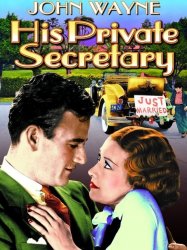
His Private Secretary (1933)
, 1hOrigin USA
Genres Drama, Comedy, Romantic comedy, Romance
Actors Evalyn Knapp, John Wayne, Reginald Barlow, Alec B. Francis, Arthur Hoyt, Al St. John
Roles Writer
Rating55%





Dick Wallace, portrayed by a 26-year-old John Wayne, has to prove to the Preacher's daughter, his own Dad, his old friends, and himself that he isn't just an irresponsible playboy. Fortunately, his new love, Marion does a good job of convincing them. The question is whether or not it is true.
Producer

Angel, Angel, Down We Go (1969)
, 1h33Origin USA
Genres Drama, Crime
Actors Jennifer Jones, Roddy McDowall, Charles Aidman, Jordan Christopher, Lou Rawls, Holly Near
Roles Executive Producer
Rating43%





The emotionally troubled daughter (Holly Near) of an affluent but brittle Hollywood couple gets caught up with a charismatic rock singer (Jordan Christopher) and his friends. The singer proceeds to seduce and manipulate her entire family.
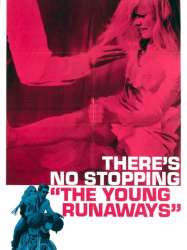
The Young Runaways (1968)
, 1h31Origin USA
Genres Drama
Actors Brooke Bundy, Lloyd Bochner, Patty McCormack, Lynn Bari, Norman Fell, Quentin Dean
Roles Producer
Rating53%





The film begins with Shelley Morrison (Brooke Bundy) packing to run away from home because she feels she is not loved by her widowed father (Lloyd Bochner). She tells their maid (future The Jeffersons star Isabel Sanford) that to her father she is not his daughter,but a product. She has overheard him telling columnist Army Archerd that he is testing some of his psychological theories about teenagers on his own daughter.

The Fastest Guitar Alive (1967)
, 1h27Directed by Michael Moore, Michael D. Moore
Origin USA
Genres War, Comedy, Musical, Crime, Western
Themes Spy films, Musical films
Actors Ben Cooper, Joan Freeman, Lyle Bettger, Douglas Kennedy, John Doucette, Frank Hagney
Roles Producer
Rating43%





Alors que les Confédérés sont sur le point de perdre la guerre de Sécession, les espions sudistes Johnny Banner et Steve Menlo, respectivement déguisés en chanteur-guitariste et en vendeur d'élixirs, sont envoyés à San Francisco pour voler une cargaison d'or afin de renflouer les caisses de la Confédération.

The Love-Ins (1967)
, 1h31Origin USA
Genres Drama
Themes Medical-themed films, Films about drugs
Actors Richard Todd, James MacArthur, Susan Oliver, Mark Goddard, Frank Coghlan, Jr., Marc Cavell
Roles Producer
Rating43%





Patricia Cross and her boyfriend Larry Osborne, two students in a San Francisco school, become expelled for the publication of an off-campus underground paper. As a result, a philosophy professor, Dr. Jonathon Barnett, resigns his teaching position and decides to become an advocate for the counterculture youth movement and, specifically, the use of LSD. The hippies of the Haight-Ashbury district (including Larry and Patricia) first see him as a hero and then as something even more. Dr. Barnett even makes an appearance on the Joe Pyne TV show to voice his support of the hippie community and the use of LSD.

Riot on Sunset Strip (1967)
, 1h27Origin USA
Genres Drama
Actors Mimsy Farmer, John Hart, Aldo Ray, Pat Renella, Tim Rooney
Roles Producer
Rating49%






Hot Rods to Hell (1967)
Directed by John Brahm
Origin USA
Genres Thriller, Action
Themes Transport films, Films about automobiles, Road movies, Chase films
Actors Dana Andrews, Jeanne Crain, Mimsy Farmer, Jeffrey Byron, Charles P. Thompson, Liz Renay
Roles Producer
Rating54%





Traveling salesman Tom Phillips (Dana Andrews) is driving home to Boston, Massachusetts for Christmas when he encounters a drunken driver on a rain-streaked road. He cannot avoid a collision, and is hospitalized with spinal damage. Since he cannot be a traveling salesman anymore, his brother arranges for Tom to buy a remote motel in the desert town of Mayville, California. Tom is reluctant, since he has never been an innkeeper before—but in the end he decides that he must travel in order to get as far away from the site of his accident as possible, as soon as possible.

Hold On! (1966)
, 1h25Directed by Arthur Lubin
Origin USA
Genres Comedy, Musical theatre
Themes Films about music and musicians, Musical films
Actors Peter Noone, Shelley Fabares, Sue Ane Langdon, Herbert Anderson, Bernard Fox, Phil Arnold
Roles Producer
Rating46%





When the children of American astronauts choose "Herman's Hermits" as the "good luck name" of the next Gemini space capsule, NASA scientist Edward Lindquist is sent by U.S. State Department official Colby Grant to shadow the band on tour. His orders are to find out all he can about them to stave off a "P.R. nightmare". (Grant fears that putting the band's name on the rocket will make the world think the U.S. is "still a colony of Great Britain".)
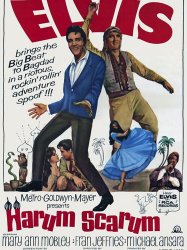
Harum Scarum (1965)
, 1h25Directed by Gene Nelson
Origin USA
Genres Drama, Comedy, Musical, Crime, Romance
Themes Musical films
Actors Elvis Presley, Mary Ann Mobley, Fran Jeffries, Michael Ansara, Phillip Reed, Jay Novello
Roles Producer
Rating46%





American movie star Johnny Tyrone goes to the Middle East to premiere his new picture. He is seduced by the lovely Aishah, then kidnapped by a man who wants Johnny to help him kill the king.

When the Boys Meet the Girls (1965)
, 1h37Directed by Alvin Ganzer
Origin USA
Genres Musical
Themes Films about music and musicians, Films about classical music and musicians, Jazz films, Musical films, Films based on plays
Actors Connie Francis, Harve Presnell, Peter Noone, Liberace, Sue Ane Langdon, Fred Clark
Roles Producer
Rating48%





 Connection
Connection

